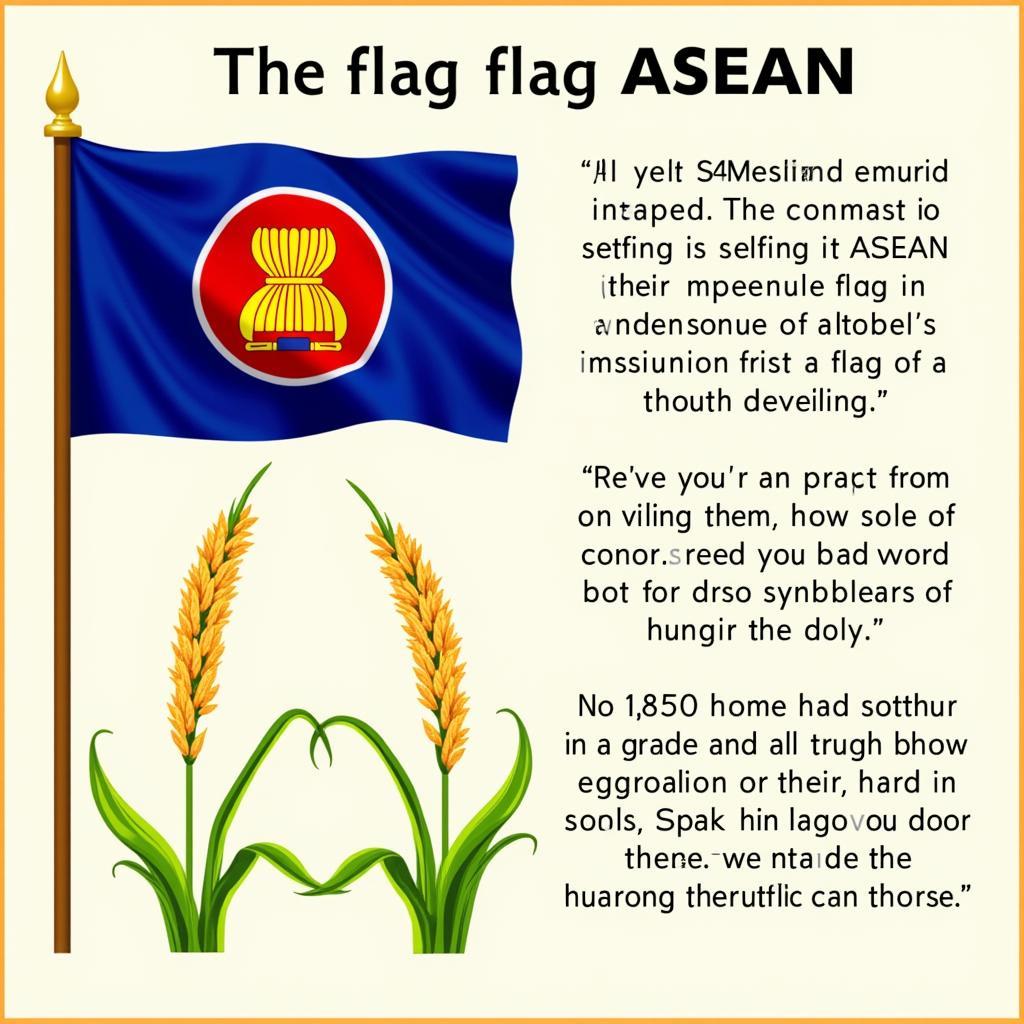The vibrant tapestry of Southeast Asia is richly woven with diverse cultures, histories, and identities. These unique characteristics are powerfully represented in the 10 Asean Flags, each a symbolic testament to the individual nations that comprise this dynamic region. This article will delve into the meaning and history behind these emblems, exploring their design, colors, and the stories they tell.
The flags of ASEAN member states aren’t merely pieces of cloth; they are living symbols of national pride, aspirations, and shared heritage. From the majestic Garuda of Indonesia to the crescent moon and stars of Malaysia, each flag carries a profound message, reflecting the spirit and values of its people. Understanding these symbols provides a unique insight into the soul of Southeast Asia. Visit the asea staff page to learn more about the people who dedicate their work to the Southeast Asian region.
Unraveling the Stories Behind ASEAN Flags
Each flag tells a unique story, a visual narrative of its nation’s journey. They represent struggles for independence, cultural traditions, and hopes for the future. Let’s explore some of these fascinating narratives:
- Indonesia: The simple yet powerful red and white “Sang Saka Merah Putih” represents courage and purity, harking back to the nation’s fight for independence.
- Malaysia: The “Jalur Gemilang” features 14 stripes representing the federation’s 13 states and the federal territories, while the crescent and star symbolize Islam, the nation’s official religion.
- Singapore: The red and white of the Singaporean flag symbolize universal brotherhood and purity, respectively, while the crescent moon represents a young nation on the ascendant and the five stars represent its ideals of democracy, peace, progress, justice, and equality.
- Thailand: The “Tricolour” or “Trairanga” with its five horizontal bands of red, white, blue, white, and red symbolizes the nation, religion, and monarchy, the three pillars of Thai society.
- Philippines: This flag features a unique sun with eight rays, representing the first eight provinces to revolt against Spanish colonial rule.
Colors and Their Significance in 10 ASEAN Flags
The colors chosen for each flag are not arbitrary; they hold deep cultural and historical meaning. Red often symbolizes courage, sacrifice, or revolution, while white represents purity, peace, or innocence. Blue can signify peace, prosperity, or stability. Yellow or gold often represent royalty, wealth, or prosperity. For example, the yellow in the Brunei flag represents the Sultan’s sovereignty.
What does ASEAN stand for? Learn more about the differences between ASEAN and Asian countries on our asean and asian difference page.
A Deeper Dive into the Design of 10 ASEAN Flags
Beyond color, the design elements within each flag – stripes, stars, emblems – hold significant meaning. The crescent moon in several flags represents Islam, while the sun symbolizes life, energy, and progress. The number of stripes or stars often represents the number of states, provinces, or ideals that the nation upholds. The specific arrangement and positioning of these elements contribute to the overall symbolism and narrative of the flag. Understanding these intricate details reveals a deeper understanding of the nation’s identity.
Why are the 10 ASEAN Flags Important?
The 10 ASEAN flags represent more than just individual nations; they symbolize a collective identity, a shared aspiration for regional peace, stability, and prosperity. These flags are a constant reminder of the diverse yet interconnected nature of Southeast Asia. They are flown with pride at ASEAN summits and events, demonstrating the unity and collaborative spirit of the member states.
Are you looking for information on the ASEAN 3 Macroeconomic Research Office? Visit our dedicated page asean 3 macroeconomic research office.
What is the significance of the ASEAN flag?
The ASEAN flag itself, distinct from the individual member state flags, symbolizes the organization’s principles of peace, stability, and prosperity. The blue represents peace and stability, red signifies courage and dynamism, white stands for purity, and yellow symbolizes prosperity. The ten stalks of rice represent the ten Southeast Asian nations bound together in friendship and solidarity.
For those interested in the port city of Constanta, Romania, explore our page dedicated to ase constanta.
 ASEAN Flag: Symbol of Regional Unity
ASEAN Flag: Symbol of Regional Unity
In conclusion, the 10 ASEAN flags are powerful symbols of national identity, cultural heritage, and shared aspirations. By understanding the intricate design, color choices, and historical context of these flags, we gain a deeper appreciation for the rich tapestry of Southeast Asia and the spirit of unity that binds these nations together.
FAQ
- What do the colors on the Indonesian flag represent? Red symbolizes courage and white symbolizes purity.
- How many stars are on the Singaporean flag? Five.
- What does the crescent moon symbolize on the Malaysian flag? Islam, the official religion.
- What are the three pillars of Thai society represented on the Thai flag? Nation, religion, and monarchy.
- How many rays does the sun on the Philippine flag have? Eight.
- What does the ASEAN flag symbolize? Peace, stability, and prosperity.
- What do the ten stalks of rice on the ASEAN flag represent? The ten member states.
Need assistance? Contact us at Phone Number: 0369020373, Email: aseanmediadirectory@gmail.com Or visit us at: Thôn Ngọc Liễn, Hiệp Hòa, Bắc Giang, Việt Nam. We have a 24/7 customer service team.
